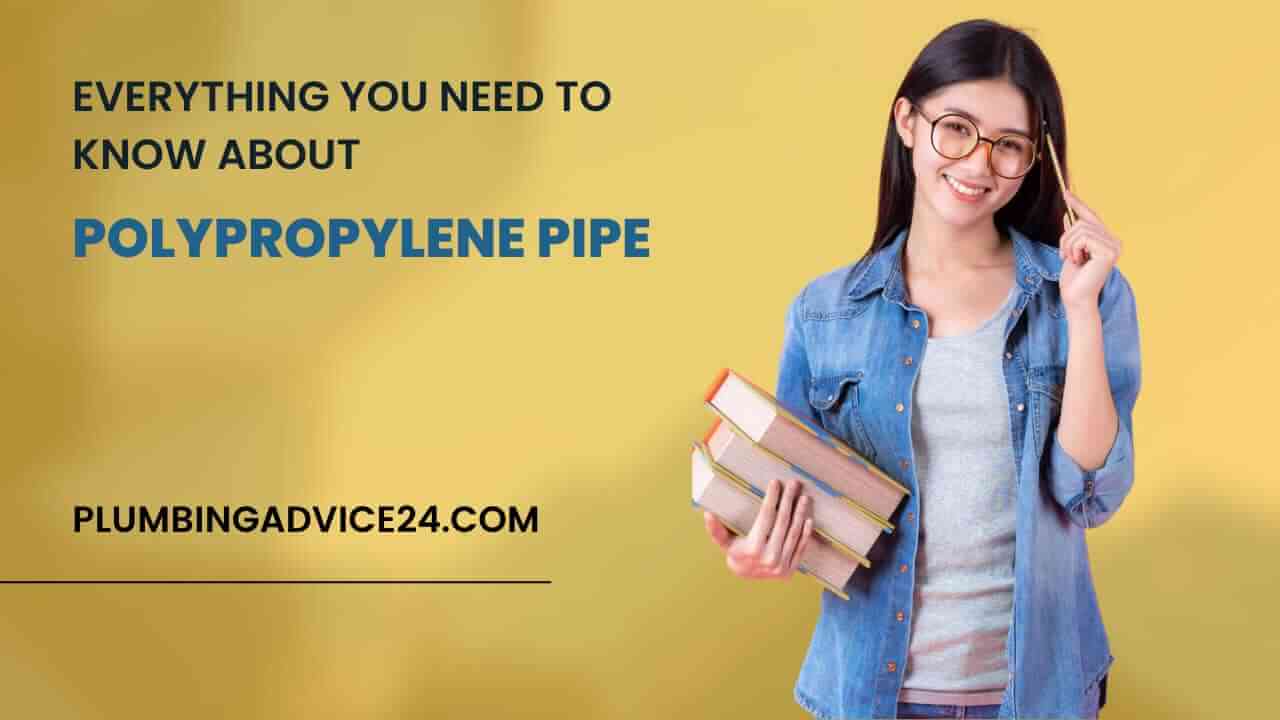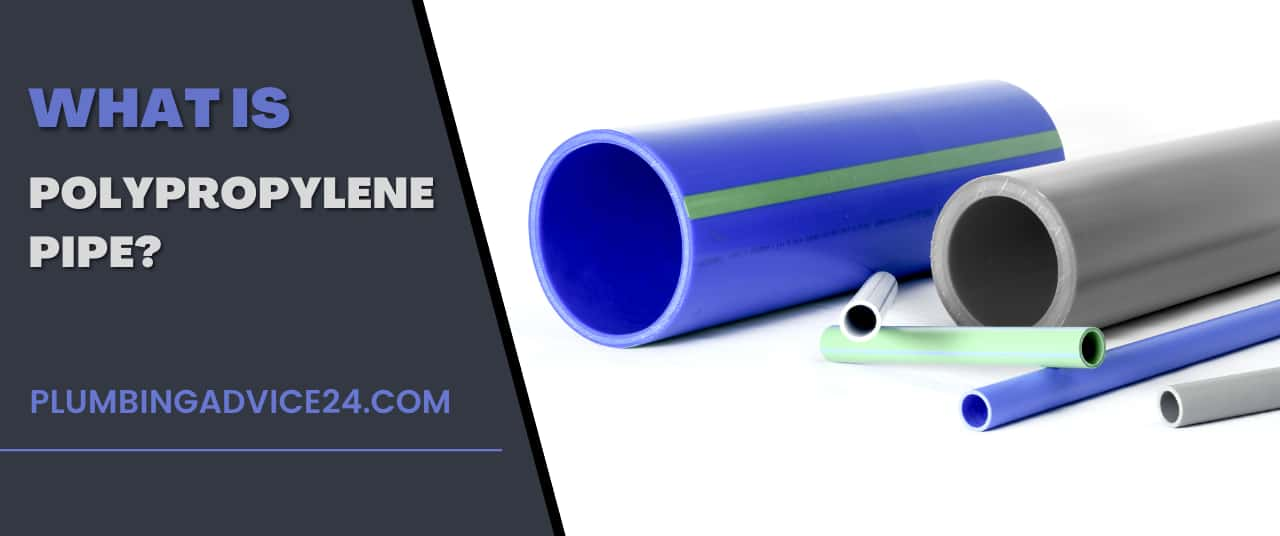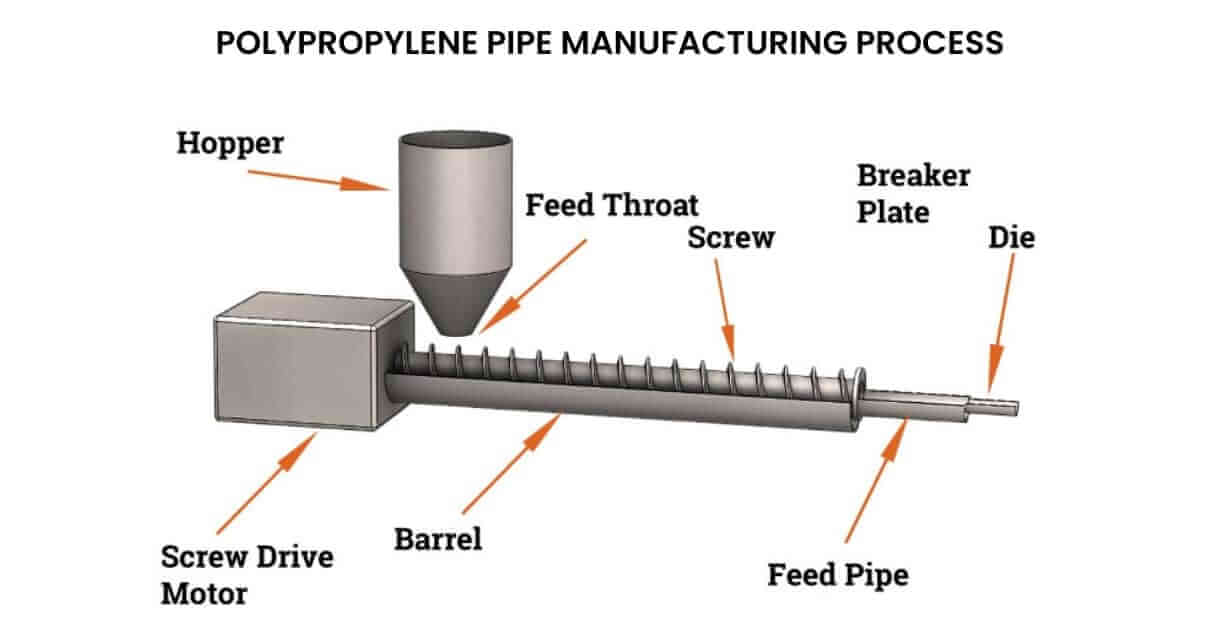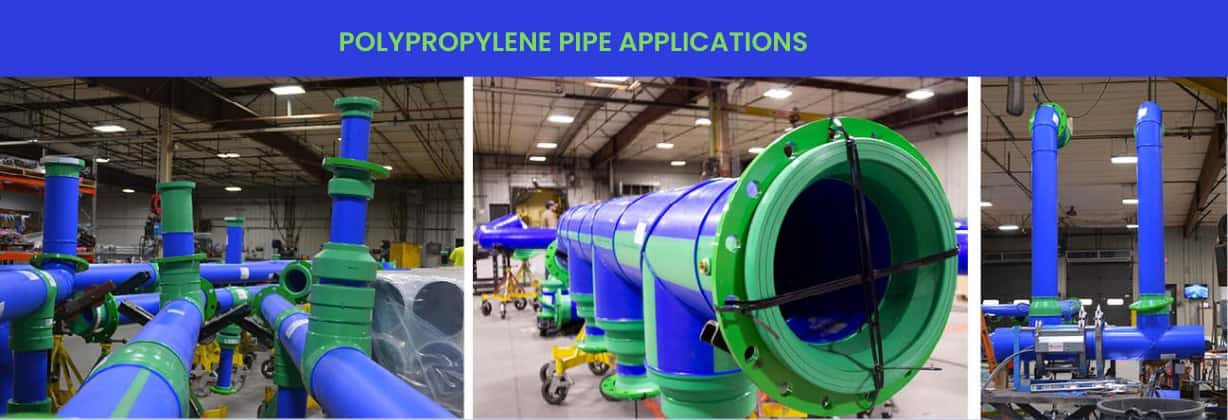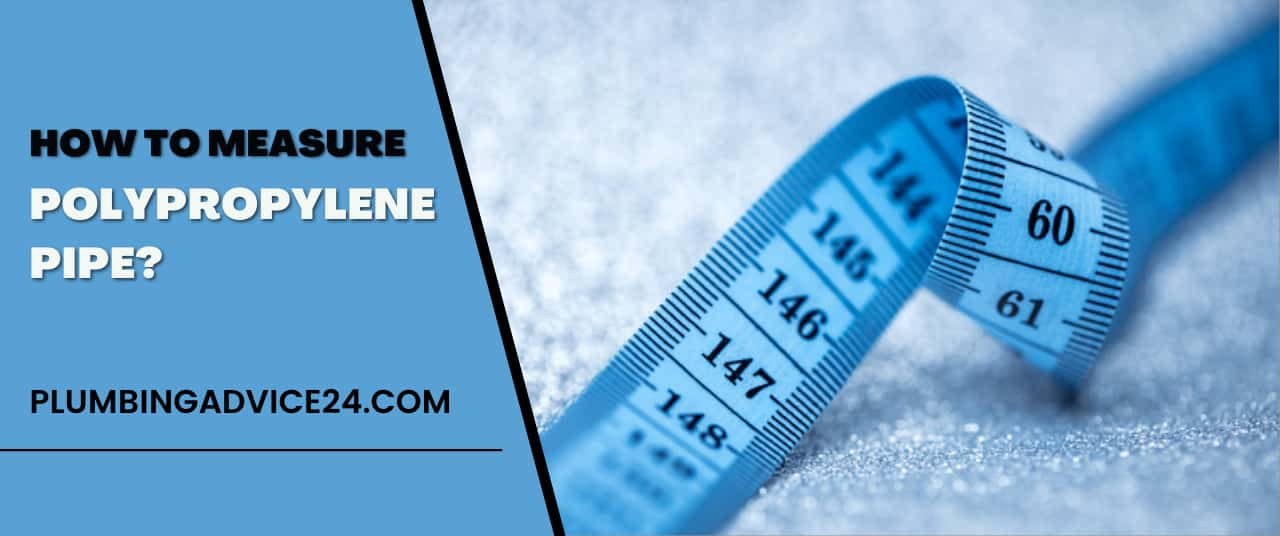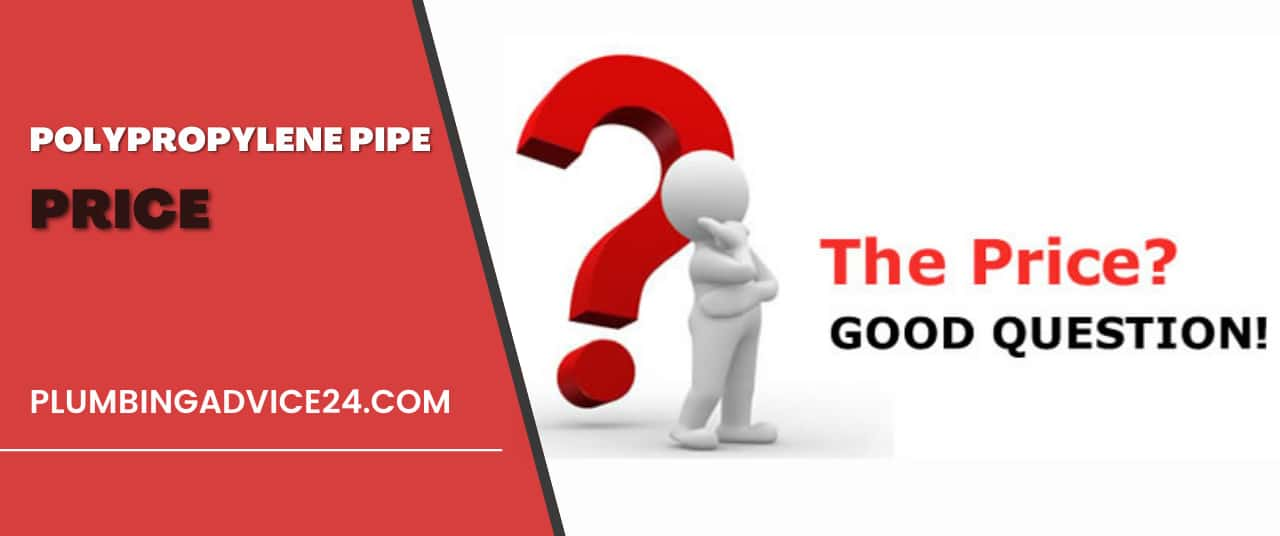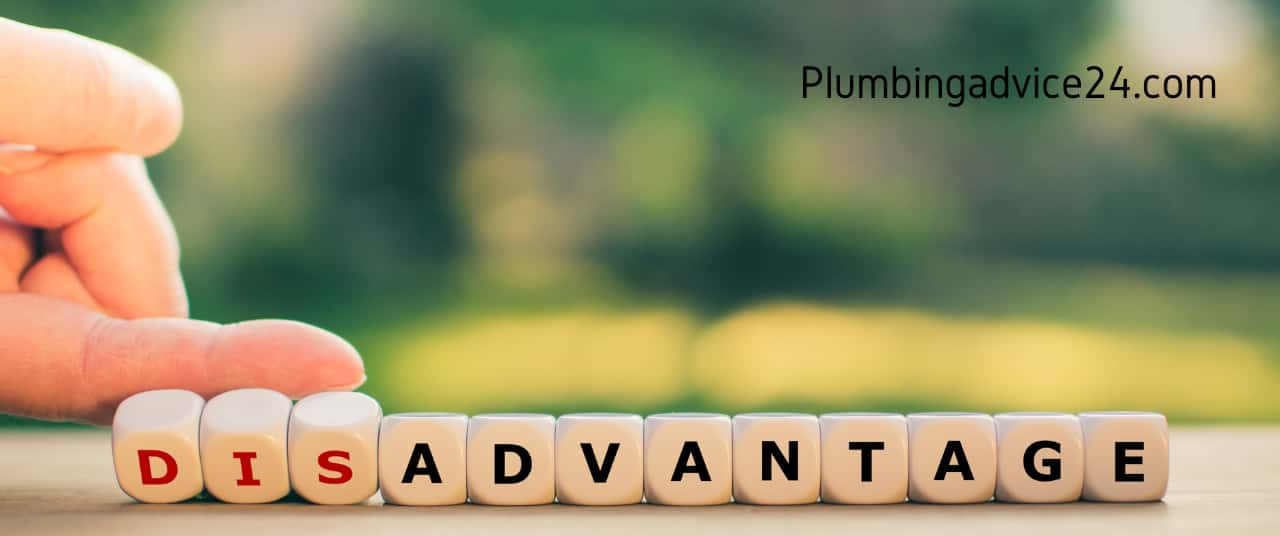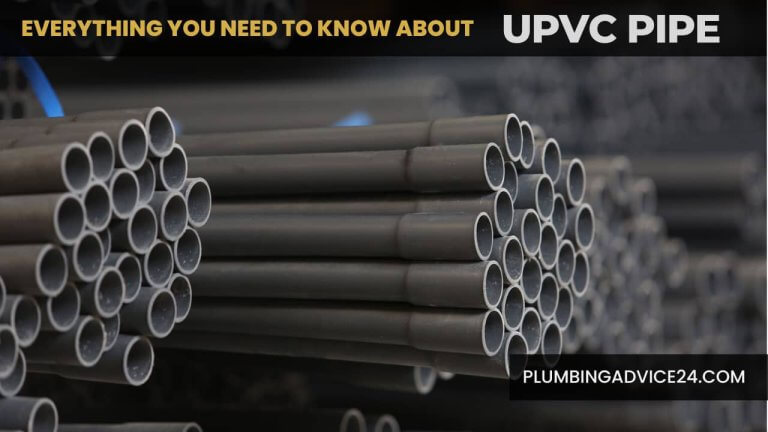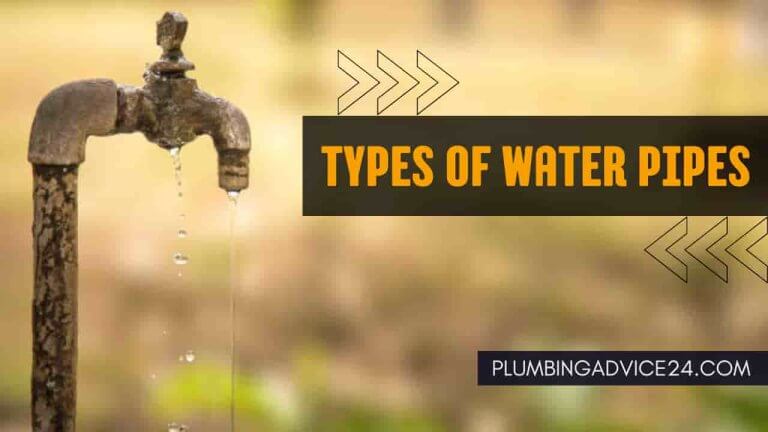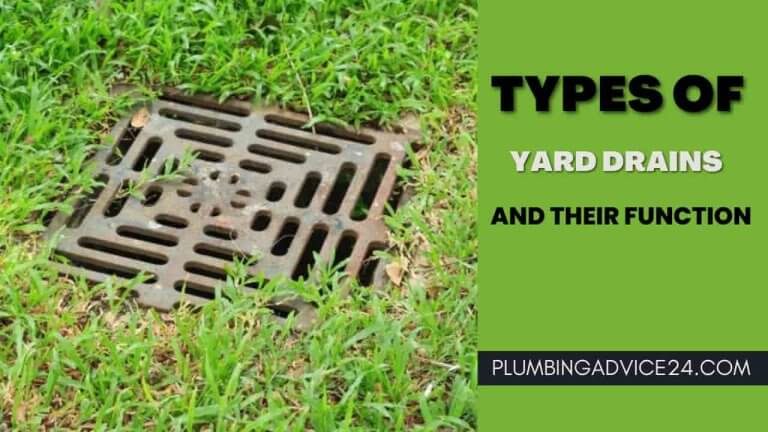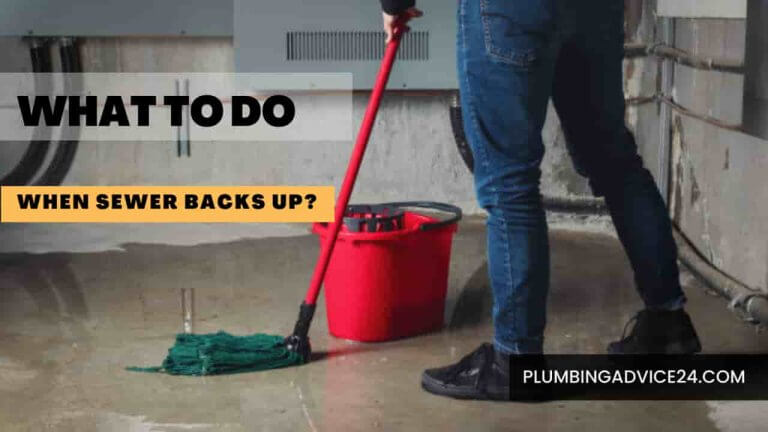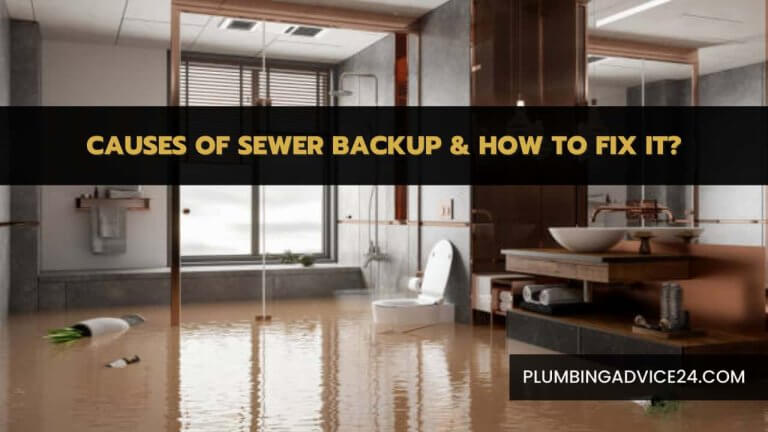Polypropylene Pipe | PP-R Pipe | PP Pipe Complete Guide
Polypropylene pipe has been used since the 1970s. With exceptional heat stability and corrosion-resistant performance, this Plastic Pipe has become the most reliable plumbing system for hot and cold water applications, with a service life in excess of 50 years. Long life, high impact resistance, good stiffness, and high chemical resistance make this material also suitable for sewer applications.
What Is Polypropylene Pipe?
Polypropylene plumbing pipe is a straight and rigid cylindrical pipe made of polypropylene random copolymer plastic produced by a continuous extrusion process. It is usually found in green or white color. This Pipe material is a straight-chain thermoplastic consisting of methyl groups on every other carbon with an empirical formula of C3H6.
The polypropylene plumbing pipe is mainly isostatic, with the methyl groups in the same position on the carbon backbone, resulting in a medium molecular weight and a degree of crystallinity between low-density polyethylene (LDPE) and high-density polyethylene (HDPE).
These properties produce a pipe that is resistant to acids, bases, and solvents and is excellent for transporting industrial fluids between processes. It is mostly used in hot or cold plumbing systems in residential areas.
Polypropylene is also used in much more corrosive and high-temperature applications (180°F) than PVC. Like purple PVC and CPVC, purple polypropylene pipe is used for non-potable applications. In chemical drainage applications, heat stabilizers and flame retardant additives are added to polypropylene to prevent flammability and thermal aging.
In addition to harsh environments, PP pipe is employed in transporting distilled water in all but the most stringent requirements. The pipe’s lack of reactivity and the ability to fusion-weld joints without adhesives maintain water purity. The pipe can be used up to 150°F (65°C) in pressurized applications and up to 180°F (82°C) in non-pressurized applications.
The primary method of joining polypropylene piping systems is with heat fusion, although mechanical joints can be used. Polypropylene pipe is available in sizes from ½” to 40″ in standard 20′ lengths. To accommodate different working pressures, polypropylene pipe is manufactured in both Schedule 80 and Schedule 40.
Must Read : What Is Plumbing Pipe | 22 Different Types of Plumbing pipes
Polypropylene Pipe Manufacturing Process
Polypropylene is a thermoplastic resin made by the polymerization of polypropylene with ethylene. These pipes are manufactured using random copolymers. Polypropylene random copolymers make thermoplastics very suitable for injection molding and extrusion. Injection molding is used to create an extrusion process for manufacturing polypropylene pipes.
Let’s see the Polypropylene pipes manufacturing process below:
- The raw material of Polypropylene is fed into the extruder as granules and melted by heat.
- The molten material is advanced with a screw (spiral rod). After leaving the extruder, it is fed into the die head.
- Polypropylene pipe production lines are mainly extruders, and some lines have co-extrusion. Co-extrusion is used to inject colored raw materials and apply color markers to Polypropylene pipes.
- A pipeline of corrugated two-wall pipe consists of two main extruders, one of which extrudes the corrugated outer layer material, and the other extruder extrudes the smooth inner layer material and inserts it into a mold for shaping.
- The material molded into the pipe-shaped die is then cooled and then extruded from the die. This is cut into the desired length, which becomes a Polypropylene pipe and is ready for sale.
Must Read : What Is Polyethylene Pipe | PE Pipe Manufacturing Process | PE Pipe Uses | PE Pipe Sizes | PE Pipe Cost
Polypropylene Pipe Lifespan
Polypropylene is produced from low-molecular-weight natural gas components or petroleum distillation byproducts at low pressure using a chromium catalyst, a lower-cost process than HDPE.
Since polypropylene pipe is less dense than other thermoplastics and certainly much less dense than steel, iron, or copper pipes, transportation costs are lower. Piping made from polypropylene is recyclable and has a lifespan of about 50 years.
Must Read : What Is HDPE Pipe | HDPE Pipe Manufacturing Process | HDPE Pipe Uses | HDPE Pipe Sizes | HDPE Pipe Cost
What Is Polypropylene Pipe Used For?
The durability, economic and ecological advantages of polypropylene have resulted in its use for an increasing number of different applications in recent years. Polypropylene pipe has been used worldwide for nearly 40 years and is highly engineered — offering HVAC application benefits that other plastics cannot.
Polypropylene pipe can serve as a tougher, longer-lasting alternative to steel, stainless steel, and some plastics for heating, cooling, and industrial applications. It offers a higher volumetric flow rate due to thinner walls and a similar improvement in thermal expansion with Multilayer Phasor (MF) compared to non-reinforced plastics.
While other piping materials lose performance to scaling and corrosion over time, this engineered polypropylene material can withstand any change in wall material and is resistant to impact and earthquake stress.
Applications of Polypropylene Pipe are as follows:
- Potable and Food-Grade Applications
- Hot and Cold Water Distribution
- Gravity Sewer Systems
- High Purity Water
- Gray Water and Industrial Systems
- Chemical Drainage Systems
- Snow-Melting Applications
- Compressed Air Systems
- Geothermal Applications
- Fire Sprinkler
Must Read : What Is LDPE Pipe | LDPE Pipe Manufacturing Process | LDPE Pipe Uses | LDPE Pipe Sizes | LDPE Pipe Cost
How to Measure Polypropylene Pipe?
Polypropylene pipes are also OD based. SDR stands for “Standard Dimension Ratio” in PP pipes and is used to rate pressure piping. It’s an inverse relationship, though. The higher the SDR, the lower the pressure rating. The SDR indicates how much pressure (in PSI) the Polypropylene pipe can withstand.
Determining the SDR of a Polypropylene pipe is quite simple. The formula is SDR = D/s, where ‘D’ is the outside diameter of the pipe (in millimeters or inches), and ‘s’ is the wall thickness of the pipe (in millimeters or inches). As the SDR decreases, the wall thickness increases. The tensile strength of a pipe increases as its thickness increases, which is the pipe’s ability to withstand pressure.
Measure the Outside Diameter (OD) of your polyethylene pipe or pipe fitting:
- Wrap a string around the Polypropylene pipe.
- Mark the point where the string touches together.
- Use a ruler or measuring tape to find the length between the tip of the string and the mark you made (circumference)
- Divide the circumference by 3.14159.
[Note: You may also have heard the term “DR,” which stands for “dimension ratio.” When the dimension ratio of a pipe is one of the following, it is considered standard, which is recognized internationally. Standard aspect ratios fall within the ANSI preferred number range and include 9, 11, 13.5, 17, 21, 26, and 32.5. All SDRs are DR, but not all Drs are SDRs.]
Polypropylene Pipe Sizes
Polypropylene is a thermoplastic of the polyolefin group. It is a semi-crystalline material. Its density is lower than other known thermoplastics. Its mechanical characteristics, its chemical resistance, and especially its relatively high heat dissipation temperature have made polypropylene one of the most important materials used in piping installations today.
The polypropylene pipe size chart is as follows:
| Nominal Pipe Size (inches) | SDR | Outer Diameter (mm) | Wall Thickness (mm) |
| 1/2 | 7.4 | 0.787 | 0.110 |
| 3/4 | 7.4 | 0.984 | 0.138 |
| 1 | 9 | 1.260 | 0.142 |
| 1 | 11 | 1.260 | 0.114 |
| 1 1/4 | 9 | 1.575 | 0.177 |
| 1 1/4 | 11 | 1.575 | 0.146 |
| 1 1/2 | 9 | 1.969 | 0.220 |
| 1 1/2 | 11 | 1.969 | 0.181 |
| 2 | 9 | 2.480 | 0.280 |
| 2 | 11 | 2,480 | 0.228 |
| 2 1/2 | 9 | 2,953 | 0.331 |
| 2 1/2 | 11 | 2.953 | 0.268 |
| 3 | 9 | 3.543 | 0.398 |
| 3 | 11 | 3.543 | 0.323 |
| 4 | 9 | 4.921 | 0.551 |
| 4 | 11 | 4.921 | 0.449 |
| 6 | 9 | 6.300 | 0.705 |
| 6 | 11 | 6.300 | 0.575 |
| 8 | 9 | 7.872 | 0.882 |
| 8 | 11 | 7.872 | 0.716 |
| 10 | 9 | 9.842 | 1.098 |
| 10 | 11 | 9.842 | 0.894 |
| 12 | 9 | 12.401 | 1.386 |
| 12 | 11 | 12.401 | 1.126 |
[Note: Above Dimensions of Polypropylene pipes according to ASTM F2389 Standard Specification for Pressure-rated Polypropylene (PP) Piping Systems SDR 7.4, 9 and 11:]
Suitable Operating Pressure:
The polypropylene pipe specification shown below is DIN 8077/78. This pipe is intended for use in applications where the conveyed fluid does not exceed 95°C.
The polypropylene dimension for a suitable operating system is as follows:
| Temperature °C | Service life in years | Nominal Pressure* | ||
| PN 10 | PN 16 | PN 20 | ||
| 10° C | 1 | 17.6 | 28.2 | 35.2 |
| 5 | 16.5 | 26.5 | 33.1 | |
| 10 | 16.1 | 25.8 | 32.3 | |
| 25 | 15.6 | 25.0 | 31.2 | |
| 50 | 15.5 | 24.3 | 30.4 | |
| 100 | 14.8 | 23.7 | 29.6 | |
| 20° C | 1 | 14.9 | 23.9 | 29.9 |
| 5 | 14.1 | 22.6 | 28.3 | |
| 10 | 13.7 | 22.0 | 27.5 | |
| 25 | 13.3 | 21.3 | 26.7 | |
| 50 | 12.9 | 20,7 | 25.9 | |
| 100 | 12.5 | 19.5 | 25.1 | |
| 30° C | 1 | 12.8 | 20.5 | 25.6 |
| 5 | 12.0 | 19.2 | 24.0 | |
| 10 | 11.6 | 18.6 | 23.2 | |
| 25 | 11.2 | 17.9 | 22,4 | |
| 50 | 10.9 | 17.5 | 21.9 | |
| 40° C | 5 | 10.1 | 16.2 | 20.3 |
| 10 | 9.9 | 15.8 | 19.7 | |
| 25 | 9.5 | 15.2 | 18.9 | |
| 50 | 9.2 | 14.7 | 18.4 | |
| 50° C | 1 | 9.1 | 14.6 | 18.3 |
| 5 | 8.5 | 13.7 | 17.1 | |
| 10 | 8.3 | 13.2 | 16.5 | |
| 25 | 8.0 | 12.8 | 16.0 | |
| 50 | 7.7 | 12.4 | 15.5 | |
| 60° C | 1 | 7.7 | 12.4 | 15.5 |
| 5 | 7.2 | 11.5 | 14.4 | |
| 10 | 6.9 | 11.1 | 13.9 | |
| 25 | 6.7 | 10.7 | 13.3 | |
| 50 | 6.5 | 10.4 | 12.9 | |
| 70° C | 1 | 6.5 | 10.5 | 13.1 |
| 5 | 6.0 | 9.6 | 12.0 | |
| 10 | 5.8 | 9.3 | 11.6 | |
| 25 | 4.9 | 7.9 | 9.9 | |
| 50 | 4.3 | 6.8 | 8.5 | |
| 80° C | 1 | 5.5 | 8.8 | 10.9 |
| 5 | 4.8 | 7.7 | 9.6 | |
| 10 | 4.0 | 6.4 | 8.0 | |
| 25 | 3.2 | 5.1 | 6.4 | |
| 95° C | 1 | 3.9 | 6.2 | 7.7 |
| 5 | 2.6 | 4.1 | 5.2 | |
| 10 | 2.2 | 3.5 | 4.3 | |
Must Read : What Is a PVC Pipe | How to Measure PVC Pipe Size | PVC Pipe Installation Cost
Polypropylene Pipe Cost
Polypropylene pipe price per foot is between $ 0.50 – 7.00. In order to obtain and use the price of suitable polypropylene pipes, polypropylene pipe types (mm and inches), high pressure, high pressure, and atmospheric pressure and load price list are specified according to the standard table of polypropylene pipes.
The price of polypropylene pipe can be changed more or less according to the schedule. You should be aware of a few things before deciding to buy polypropylene pipes for your specific applications.
Polypropylene pipes can be damaged due to improper storage. Check it out before buying. Reputed brands are well known for product quality, while generic options may be cheaper but unreliable for durability and longevity.
Don’t pick any polypropylene pipes you come across on the store rack or just because they are the cheapest. You may need to spend more later.
Must Read : What is PEX Pipe | How to Measure PEX Pipe | PEX Pipe Size | PEX Pipe Installation Cost
Advantages of Polypropylene Pipe
Polypropylene pipe has many advantages that make it a popular material for manufacturers and users who can apply it in many applications.
Polypropylene Pipe Advantages Are as follows:
- Polypropylene pipes are cheaper than other metal pipes. Additionally, its lightness makes it quick and easy to transport, making it a labor-efficient material.
- Polypropylene pipe has a good lifespan. Piping that lasts decades in applications—often longer than a building
- The chemical properties of polypropylene mean that it does not react with acids and has a greater chemical resistance than metal pipes.
- Polypropylene is also highly resistant to corrosion and chemical leaking, making it the material of choice for piping systems. Plastic also resists freezing well, so climatic conditions have no effect on polypropylene pipes.
- Polypropylene pipe is a relatively cost-effective material, as it is easy to install and does not require special tools.
- Polypropylene pipe is completely recyclable throughout its life cycle, making it environmentally friendly.
Disadvantages of Polypropylene Pipe
Like all manufactured materials, polypropylene pipe also has some drawbacks that users and manufacturers should be aware of before applying the plastic material.
Polypropylene Pipe Disadvantages Are as Follows:
- Polypropylene pipe is often affected by UV degradation, making it unsuitable for installation in direct sunlight. The pipe must be painted with PVA to protect it from the sun’s rays.
- Polypropylene has limited use at high temperatures because it suffers from chain degradation that can lead to oxidation. This results in the cracking of the polypropylene pipe.
- Polypropylene pipe has a high thermal expansion coefficient, which limits its high-temperature applications.
- Polypropylene pipes are prone to failure if the water flow rate, water pressure, and water temperature are too high.
- Additions or repairs to the Polypropylene pipe system can only be made using a fusion-welding tool.
Must Read : What Is a Sewer Line | How Many Types of Sewer Pipes | Best Sewer Line Insurance Company
What Is PP Pipe?
PP pipe is a straight and rigid cylindrical pipe made of polypropylene random copolymer plastic produced by a continuous extrusion process. It is usually found in green or white color. These pipes have high heat resistance and good performance even at low temperatures. For this reason, as well as the non-toxicity of the material, PP-R pipes are ideal for transporting drinking water.
Is Polypropylene Pipe Safe for Drinking Water?
Polypropylene plumbing pipes are a good choice and are less expensive than copper pipes. Unlike copper or other plastics, Polypropylene pipes will not leach any chemicals into drinking water, protecting the health and safety of your piping systems and those who use them.
What Are Polypropylene Water Pipes Used For?
Polypropylene water pipes are used for potable and food-grade applications, hydronic, gray water, and industrial systems. They are also used for light-hazard fire sprinklers, geothermal and other systems.
Can Polypropylene Pipe Be Used as Waste Pipe?
Polypropylene waste pipe has been one of the most common materials specified for acid waste piping systems in North America for more than 30 years. Resistant to a wide range of acids and bases, polypropylene can withstand a pH range of 2 to less than 13.
However, although polypropylene is an economical choice for chemical-resistant piping, it is flammable and often not allowed by building codes. Do not allow exposed combustible pipes, including return air plenums, in certain areas. New PVDF piping is a useful alternative when fire resistance is required.
What Are the Advantages of a Polypropylene Piping System?
Polypropylene piping system is quicker to install, rust-free, and lasts for decades. These are just a few of the many advantages of polypropylene pipe. Polypropylene is the perfect piping material for all sizes of pressurized mechanical and plumbing systems. Do not accept imitation Read the above article in full for more information about Polypropylene Pipe.
Is Polypropylene Stronger Than PVC?
Natural PVC, without added plasticizers, is hard and brittle. Polypropylene is naturally flexible and very tough. It will stretch and deform but not break. Items like garden chairs can be molded with polypropylene and will last for years, but the same article in PVC would be very short-lived.
Are Polypropylene Plumbing Pipes Strong?
Polypropylene plumbing pipe has a much longer life and will never scale or corrode like metal pipes. This pipe is both physically and chemically resistant to abuse that can damage other piping materials. Polypropylene is a thermoplastic polymer that is made up of chains of carbon and hydrogen.
Is Polypropylene Stronger Than Steel?
Polypropylene is lightweight, and it also represents a surprising amount of strength and durability. On a pound-per-pound basis, products made with polypropylene are about three times stronger than those made with steel.
Is Polypropylene Better Than Plastic?
Polypropylene, which is derived from petroleum, is considered by the Environmental Protection Agency (EPA) to be a safer choice than some other types of plastics.
How Strong Is Polypropylene Pipe?
Compared to many pipe materials, polypropylene’s structure has a good tensile strength—somewhere around 4,800 psi. This allows the material to withstand fairly heavy loads, despite being lightweight.
If You Liked This Post? So Share It with Your Friends
Suggested Articles:
- What is CPVC Pipe | CPVC Pipe Manufacturing Process | CPVC Pipe Applications | CPVC Pipe Dimensions | CPVC Pipe Cost
- What is uPVC Pipe | uPVC Pipe Manufacturing Process | uPVC Pipe Applications | uPVC Pipe Dimensions | uPVC Pipe Cost
- Difference Between PVC and CPVC | Which Is Better, PVC or CPVC Pipe
- What Is ABS Pipe | Why Is ABS Pipe Prohibited | How to Measure ABS Pipe | ABS Pipe Installation Cost
- Difference Between ABS and PVC | How to Connect ABS to PVC Pipe | Which is Better ABS or PVC Pipe
- What Is Steel Pipe | Steel Pipe Manufacturing Process | Steel Pipe Uses | Steel Pipe Size | Steel Pipe Cost
- What Is Pipe Fittings | 12 Types of Pipe Fittings
- What is Plumbing Tools | 31 Types of Plumbing Hand Tools
- What Is Plumbing Trap | 15 Different Types of Plumbing Traps
- 33 Different Types of Wrenches | Best Company for a Wrench
